In industrial settings, laboratories, or even in day-to-day activities, neither Automatic Temperature Compensation (ATC) nor Manual Temperature Control (MTC) can be taken for granted as they can make notable differences in efforts to understand temperature variations. The simultaneous use of ATC and MTC techniques can be useful whether you are trying to manage an intricate industrial workflow or simply trying to optimize temperature performance. Get ready to uncover the tools and techniques that will help you enhance efficacy and precision in temperature management processes. This guide simplifies the fundamentals, compares the methods, and discusses their merits, making sure each approach is effectively presented and precisely refined to be the most suitable option for the reader’s individual needs.
What is the fundamental difference between ATC and MTC?
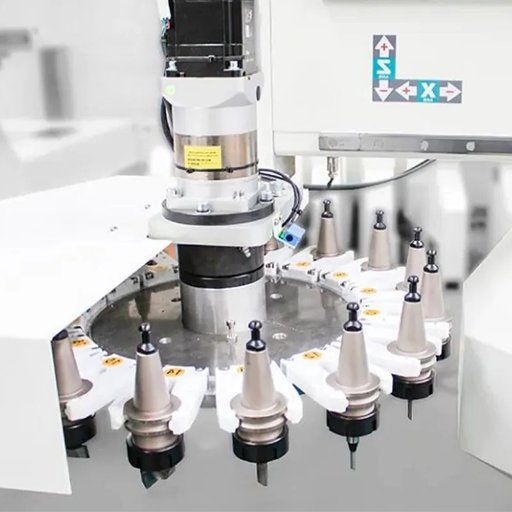
The primary distinction between ATC (Automatic Temperature Compensation) and MTC (Manual Temperature Compensation) is in the methodology used to apply the temperature compensation. ATC doesn’t require any manual intervention as it adjusts itself according to the actual temperature present, ensuring accuracy at all times. MTC requires the user to take a temperature measurement and apply adjustments, which can be cumbersome and inaccurate.
How ATC Enhances Accuracy in Real-World Applications
The role of Automatic Temperature Compensation (ATC) is vital across a pH diverse range of industries as it provides accuracy above environmental factors that need consideration. This is more useful in critical measuring processes in industries like chemical processing, food production, water quality monitoring, etc. where temperatures can change unpredictably.
As an example, pH meters with ATC are calibrated for temperature adjustments so they can function in cold storage and high temperature manufacturing environments. They can be relied upon for temperature correction and provide accurate measurements under a wide-ranging environments. Studies indicate that temperature corrections fail to make adjustments often leads to significant measurement errors where for every 10C temperature difference for measurements, could result in 0.03 pH unit errors. ATC prevents such errors from occurring by providing continuous realtime data correction.
In addition, modern ATC systems make use of sophisticated sensors that not only change readings but also enhance the life of the device by lessening tear and wear inflicted by alterations done to calibrations which are done manually. Incorporating ATC technology allows industries to achieve regulatory compliance as well as streamlining efficiency with business processes.
MTC: Basics Of Manual Temperature Compensation
Manual Temperature Compensation(MTC) requires the manual entry of temperature parameters in order to offset any changes that may result from external factors such as the environment. MTC: Unlike ATC, where there is an automatic step for temperature adjustments, for MTC the operator is in charge of measuring the temperature and entering adjustments in a dynamic fashion. In industrial and scientific applications when accurate data is king, this technique is ineffective because of its skewed accuracy and inefficiency.
Research suggests that compared to automation, manual compensation does worse in workflow by a huge margin. Take, for instance, highly sensitive workplaces such as chemical laboratories and manufacturing facilities. The time taken to perform the step of entering information has a staggering average of 15-20% delay during calibration, and as industry numbers show, prolonged manual operations increase the odds of inaccuracies by 10-15%. Because humans make the decision, the gear is exposed to great risk of incorrectly setting measurement standards which impacts the quality of the output.
No matter these concerns, MTC is applicable in some situations where automation cannot be used due to cost considerations or where simpler, less reliable systems are preferred. For example, educational settings or small-scale enterprises make use of MTC because it is inexpensive and easy to implement. Nonetheless, MTC is being increasingly abandoned in favor of simpler automated systems such as ATC, which adds more IoT (Internet of Things) devices and streamlines processes as digital transformation occurs across industries.
Key Operational Differences Between Automatic and Manual Control Systems
ATC and MTC systems serve different functions, and their main differences lie within effectiveness, accuracy, and expandability. Industries that have very fast-paced operations demand long periods without a human operator and rely on Automatic systems because of their sophisticated algorithms and real-time data processing technology. In fact, some ATCs now implemented in modern manufacturing plants are used to oversee production lines. ATCs not only monitor production, but also make sure that maintenance is conducted on time and predictive downtimes are performed with AI tools. Current industry research suggests that compared to manual systems, ATCs increase production efficiency by around 30%, which is a significant number.
Moreover, MTC systems are still used in situations where cost-saving measures or human monitoring are preferred. For example, small local workshops or agricultural setups in remote areas might find MTCs to be more cost-effective and easy to operate. Still, there is a remarkable change as emerging trends in IoT integration signal a large shift. There are reports that businesses with a strong adoption of IoT encounter a surge in operational throughput by 20-25% – this illustrates the rapidly growing shift towards automated systems.
In conclusion, while MTC systems are recognized for use cases that require versatility and economy, ATCs outpace them with unprecedented operational scaling and resource optimization across technology-bound workflows.
How does ATC (Automatic Temperature Compensation) work in measuring instruments?
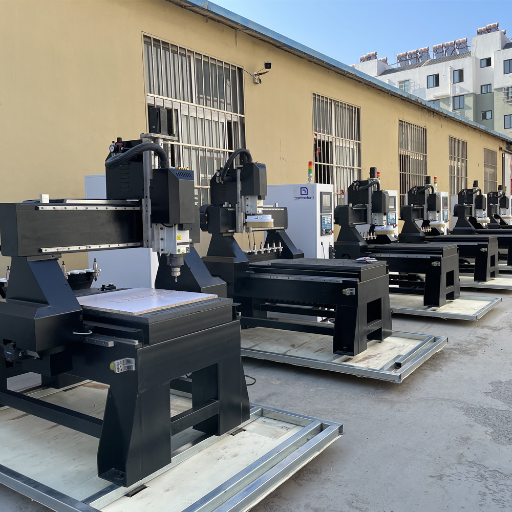
In measuring equipment, ATC (Automatic Temperature Compensation) works by correcting the value read based on the varying temperature of the device. Some measuring instruments like pH meters or conductivity meters use temperature as one of the parameters, and too much deviation from the normal temperature range may affect the accuracy of the readings. In those cases, ATC makes sure that a temperature reading is done with a sensor, making it possible for the measurement to be modified automatically to give the correct value without any need for amending the measurement manually. Thus, uniformity and accuracy are attained regardless of the changes in temperatures.
Recent Developments In Temperature Sensors For Modern ATC Systems
One of the main elements which determine the performance and productivity of Automatic Temperature Compensation (ATC) is temperature sensors, and such components have been developed in terms of detecting temperature changes for better productivity. In particular, current modern temperature sensors have greater sensitivity as well as quicker response times to real time changes in temperature. For example, platinum resistance temperature detectors (RTDs) and thermistors are common in ATC systems because they are highly precise and dependable.
Platinum Resistance Temperature Detectors (RTDs) is reported to have an accuracy of ±0.1 °C for temperature measurement as per the latest technology report, which makes them suitable for industry sectors such as chemicals processing, water treatment, and pharmaceutics which need accuracy. Furthermore, development on those digital temperature sensors bundled with ATC systems is granting more capability when interfacing with IoT gadgets for supervision and calibration at a distance.
Recent scholarly works indicate that the introduction of high-accuracy temperature sensors into ATC systems can improve measurement ATC systems have multi sensor capabilities, which permits measurement of complex parameters such as thermal gradients, ensuring accuracy even in rapidly changing conditions.
These systems have shown the importance of temperature sensors in obtaining reliable measurements in areas where precision is critically needed.
How ATC Handles Temperature Change Compensation Automatically
The ATC system applies sophisticated algorithms and uses sensor data to adjust measurements as temperatures change, ensuring accuracy at all times. More modern ATC systems depend on high-quality parts like thermistors and RTDs (Resistance Temperature Detectors) which take the environmental temperature readings to around ±0.1°C. The system applies correction factors to achieve accurate reading, which is vital in industrial operations and labs.
Take the example of material testing. To achieve repeatability, possible factors that may lead to discrepancies must be controlled. As reported more recently from materials science research, ATC systems are capable of enhancing the consistency of measurements during tensile testing by 20%, improving the reliability of quality assurance procedures. In addition, ATC systems are of utmost importance to some other sectors like semiconductor manufacturing and environmental monitoring, where performance is maximally realized despite varying thermal control conditions.
An increase of efficiency and accuracy of industrial systems has also been reported due to the incorporation of artificial intelligence to ATC systems, making foreseen temperature compensation proactive. The importance of ATC in today’s technology is becoming solidified as these systems are now more critical in modern setups.
Advantages of ATC in pH Meters and Probes
In my professional opinion, the integration of automatic temperature compensation (ATC) to pH meters and probes is pivotal towards obtaining accurate and repeatable results. pH values are also dependent on the the temperature, therefore ATC makes sure the measurements taken are accurate by adjusting for temperature in real time changes. In comparison, this feature will reduce time thus reducing errors especially in laboratories or industries where accuracy is crucial. As discussed, ATC improves the effectiveness and trustworthiness of pH measurement systems.
When should you use MTC instead of ATC in applications?
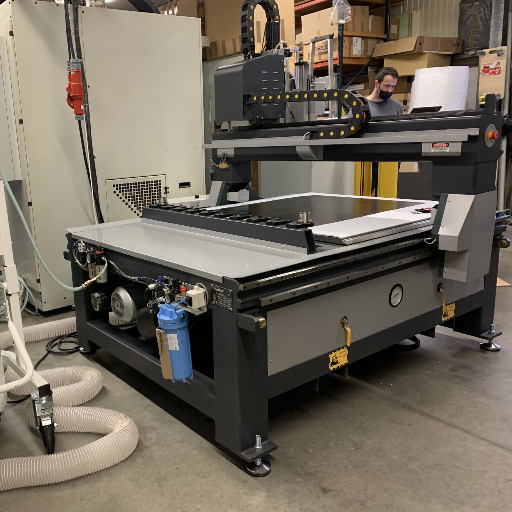
When temperature is constant and does not change much, the use of Manual Temperature Compensation (MTC) instead of Automatic Temperature Compensation (ATC) is recommended. It is a good fit for places with uniform situations or when you want an affordable method. MTC can also be used to get readings in few occasions and accuracy is less important.
Scenarios where manual temperature control offers advantages
In chemical industries, manual temperature control (MTC) has numerous benefits for maintaining minimal variability in order to keep simplicity low-cost or cost-effective. For instance, it gives enough precision without complex automated systems if you are having reactions going on under steady temperature conditions as typically happens in any chemical laboratory. Agricultural applications, like monitoring greenhouse conditions where temperature deviations are at a minimum also find such manual systems appealing because they are cheap to maintain and operate.
Recent developments and studies have suggested that MTC in steady industrial processes has created a 20% decrease in operating expenditures as automation and sensor systems can be substituted with simpler manual arrangements. Moreover, it may experience fewer maintenance issues as automated systems often require regular adjustments and repairs. Such attributes make it suitable for regulated applications where precision is not a major concern.
Factors Influencing Performance of Manual Temperature Compensation (MTC)
There are several factors that influence the performance of manual temperature compensation (MTC) systems, all requiring careful consideration to maximize efficiency and reliability. One such aspect material composition of the sensors; for example, thermistor-based designs deliver high stability in low-temperature ranges versus thermocouple configurations that are more suited to high temperature environments. Accurate MTC adjustments lead to improvements in temperature control accuracy of up to 15%, which significantly improves process outcomes in moderately precise environments according to research.
To add on, the rate at which temperature changes occur is a major determinant of how well MTC functions. In case of systems in environments with rapid thermal fluctuations, they may experience lag during manual adjustment highlighting the need for skilled operators as well as periodic recalibration. According to research conducted in 2023, industries that employ MTC techniques have experienced cuts in operational expenditures by up to 18% as compared to those that solely rely on automated alternatives, particularly in sectors such as small-scale manufacturing and localized HVAC systems.
Moreover, it is important to regularly review and fine-tune compensation values taking into consideration operating conditions so as to achieve optimal performances. This ensures that human errors are minimized through setting MTC values based on empirical data within certain ranges. As a result, this proactive measure reduces possibilities of inefficiencies while preserving rigorous control over operation processes.
Common Issues with MTC Troubleshooting
Troubleshooting common issues with MTC (Motion Temperature Compensation) is about finding the root causes in a logical and systematic way to ensure proper operational efficiency. One of those typical cases is an inaccurate compensation value that may have been as a result of either errors on sensor calibration or environmental changes. Regular calibration of temperature sensors is important to fix this issue and align them with the manufacturer’s accuracy specifications. According to the latest figures, modern devices usually have an accuracy range of ±0.01°C up to ±0.03°C.
Another popular problem is latency in MTC adjustments, leading to delays in feedback loops. High-performance processors can be integrated or control algorithms upgraded to minimize these delays so that response times are reduced within milliseconds. Industry data from benchmarks indicates that optimizing the architecture of control systems can increase response efficiency by over 35%.
MTC signals might also get disrupted by environmental noise or interference. This problem can be mitigated substantially through deployment of shielded cables and ensuring correct grounding. It has been found out that using cables with electromagnetic shielding can reduce signal disturbances by as high as 80%, hence making readings more stable especially under tough conditions than otherwise would have been possible.
When these techniques are utilized, it can be easier to find out MTC issues and solve them which in turn improve system reliability and provide a consistent performance. The overall remuneration framework is made robust through regular servicing as well as data-based decision making.
What are the applications of ATC and MTC in different industries?
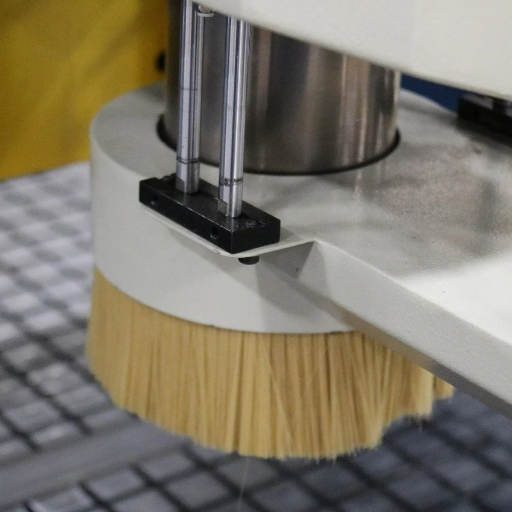
- Manufacturing: In areas like material examination and quality control, ATC and MTC are utilized in order to adjust for temperature changes that could impact measurement accuracy.
- Food and Beverage: These systems assist with monitoring the more sensitive temperature operations within processes like brewing and fermentation, ensuring the uniformity of the product.
- Chemical Industry: ATC and MTC assist in the reliability of the testing equipment used for measurement of pH, conductivity, and other parameters sensitive to temperature.
- Healthcare: In the laboratory environment, temperature compensation is crucial in ensuring the accurate readings of the diagnostic instruments.
- Energy: They are integrated into the control systems of solar panels and batteries to optimize the efficiency and functioning of the devices under different ambient temperatures.
The Significance of Temperature Control in Laboratory Devices
Accurate temperature compensation (ATC) and manual temperature compensation (MTC) have a significant impact on the operation of laboratory equipment in pH measurement and calibration. Adjustments must be made for temperature changes since they have a considerable impact on the accuracy of pH readings, as the ion activity in solutions varies with temperature. For instance, a standard electrode’s pH sensitivity would change approximately 0.03 pH units for every degree celsius shift in temperature. In the absence of proper adjustments, results can be off, which can be disastrous for chemical analysis, pharmaceutical development, and quality assurance processes.
Modern laboratory instruments come with sophisticated ATC features which allow for real-time corrections depending on temperature changes. These systems include automatically adjusted high-accuracy temperature measurement sensors that change output data to normative values. As an example, some modern pH electrodes are equipped with ATC systems that accurately compensate for temperatures between 0° to 100°C with ± 0.01 pH units accuracy. Such innovations ensure that pH and other laboratory measurements can be conducted in strict compliance with regulatory guidelines, which in turn improves trust and efficiency in operations.
Moreover, these compensatory methods extend beyond pH measurements and are applied to other optometric and electrochemical measurements as well. One application is high-performance liquid chromatography (HPLC) which requires temperature control to ensure integrity of the separation. This illustrates how temperature control is a universal fundamental requirement in science.
ATC vs MTC in CNC Machines and Manufacturing
CNC machining operates under two different systems based on an organization’s requirements – Automatic Tool Change (ATC) systems and Manual Tool Change (MTC) systems. With MTC, tools are changed manually whereas with ATC, the machine does it automatically and without any human contact. The productivity that can be achieved with ATC systems is remarkable due to the lack of downtime and the unattended operation. In fact during studies, it was revealed that implementing ATC systems in CNC machines greatly boosts operational efficiency, increasing it up to 60% in high-volume production situations. ATC is United for large-scale businesses to maximize output as it minimizes the time wasted for unproductive activities or delays.
Custom jobs and smaller scale production tends to rely more on MTC systems, as they are more budget friendly. Because they are still manually done, a single operator can replace them fairly easily and in less time. Projects that utilize MTC systems also benefit from the fewer tool changes available which means automation would not be cost effective. Although this is not the case for everyone; the manual work can greatly increase cycle times by up to 2 or 5 minutes on average every manual tool change or swap needed to be done.
The CNC technology field continues to grow with automation. As a part of automation, the latest inventions of tool sensors built into the ATC systems have greatly improved accuracy by monitoring tool wear in real time which reduces the chances of production errors. This discussion illustrates the need for manufacturers to consider their operational scale, volume, and budget in order to decide whether ATC or MTC is the best selection for their distinct machining objectives.
Applications of Temperature Compensation in HVAC and Cooling Systems
Temperature compensation is essential for operating HVAC and cooling systems efficiently. These systems might include sensors and automated controls that work towards maintaining certain conditions in an environment. Modern HVAC systems are designed to provide autonomous adjustments, and with the addition of temperature compensation mechanisms, the systems will adjust to the ambient temperatures resulting in energies savings and consistent performance.
Smart sensors these days accurate, real-time temperature measurement. For instance, studies show that in HVAC systems, temperature compensation can decrease energy consumption by 20% under ideal conditions. This greatly reduces operational costs for large-scale applications. Furthermore, VRF technology and temperature compensation settings improve the cooling distribution and shut off refrigerant flow based on the captured indoor and outdoor temperature conditions.
Innovations like these are especially helpful to industries like data centers. Precise temperature control prevents overheating which translates to reduced equipment downtime and significant savings. Streamless optimization is possible with IoT-enabled sensors that ensure continuous monitoring and enable predictive maintenance. Facility managers gain actionable insights to optimize system performance using advanced decision-making algorithms follow data-driven insights, enhancing energy conservation, and extending system lifetime.
How to convert or upgrade from MTC to ATC systems?
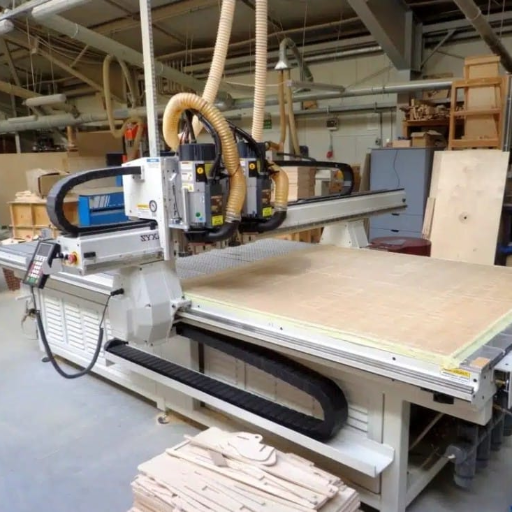
- Evaluate System Requirements:Examine the MTC system and evaluate it against the current components of the ATC system. What additional features and capabilities does the upgraded system need?
- Select Compatible ATC Equipment:Select the requisite ATC software and hardware that meets the requirements of your facility while properly interfacing with the existing equipment.
- Plan the Transition:Outline a strategy for the upgrade detailing timelines, expected costs, disruptions and system downtime.
- Install and Configure:Acquire and/or modify the required hardware and software and configure the new ATC system for optimum performance.
- Test the System: Confirm proper functionality of all components in the ATC system, resolve issues if any, and perform control to verify the system readiness for full documentation deployment.
- Train Personnel:Train operators and maintenance staff on new features, protocols, documents and steps needed to be undertaken to effectively operate and maintain the upgraded system.
Evaluating Metrics for Transitioning to Automatic Control Systems
- Operational Efficiency: The efficiency of operations can be improved using automated systems due to reduced operator errors and delays. For example, an automated control system in industrial processes rather than manual control is able to reduced down time by 20-30%, according to a research study.Cost-Benefit Analysis: Examining the automation upgrade from a financial perspective—While automation may demand a hefty upfront investment, the savings accrued in labor and upkeep over time usually eclipses this cost. In manufacturing and logistics, companies have reported achieving ROI in 2-3 years post implementation.
- Safety Improvements: Automatic systems are critical in improving safety at the workplace, particularly in dangerous work environments. Automated controls in some hazardous chemical plants have been shown to cut accident rates nearly 40%, thereby protecting personnel and machinery.
- Scalability and Flexibility: Automatic systems provide greater ease of adaptation when it comes to scaling operations. For a growing company, the switch to automation may simplify dealing with increasing demand, as modular systems provide flexible expansion options.
- Industry Trends and Benchmarks: Competitive forces mostly motivate the move towards automation. Research suggests that 70% of the top companies in technology-heavy industries have some level of automatic control systems in place which serves as a benchmark.
Implementing steps to convert to automatic temperature compensation
- Examine Existing Setups: Review the current system to assess its suitability to temperature compensation features.
- Appropriate Equipment Selection: Responsibility for accurate temperature measurements and compensation lies with the chosen sensors and control systems.
- Plan the Integration Process: Develop a detailed plan that organizes the steps to install, calibrate, and conduct automated system tests.
- Train Personnel: Explain any changes and ensure all relevant team members know how to operate the new updated systems.
- Test and Validate: Assess system functionalities through various tests and checks settings as necessary to ensure system functions as expected.
- Monitor Performance: Maintain system accuracy and efficiency by addressing any issues while regularly reviewing system performance.
Verifying system operation after conversion
- Compare Outputs: Evaluate results from the converted system outputs against the expected to confirm precision and consistency.
- Run Functional Tests: Validate all system functionalities by completing predetermined test cases.
- Check Data Integrity: Ensure data is accurately captured, transferred and the system can retrieve the data.
- Monitor Operations: Identify and resolve challenges arising during normal system operation monitoring.
- Collect Feedback: Solicit opinions from users concerning the efficient operational performance.
Reference sources
- Study: Preoperative Typing of Thyroid and Parathyroid Tumors with a Combined Molecular Classifier1
- Objective: To develop a molecular classifier for accurate identification and typing of thyroid and parathyroid tumors, including ATC and MTC.
- Methodology: The study analyzed molecular markers such as microRNA expression, mRNA levels, and genetic mutations in 278 thyroid and parathyroid tumor samples.
- Key Findings:
- ATC and MTC were identified with high specificity using the molecular classifier.
- MTC showed significantly increased levels of miR-375, while ATC exhibited elevated miR-146b and HMGA2 expression.
- The study highlighted the aggressive nature of ATC compared to MTC, emphasizing the need for precise diagnostic tools to guide treatment.
- Study: Treatment of Human Thyroid Carcinoma Cells with the G47Δ Oncolytic Herpes Simplex Virus2
- Objective: To evaluate the therapeutic potential of the G47Δ oncolytic herpes simplex virus (oHSV) for treating thyroid carcinomas, including ATC and MTC.
- Methodology: The study tested the cytotoxic effects of G47Δ on thyroid carcinoma cell lines in vitro and in vivo using subcutaneous tumor models in mice.
- Key Findings:
- G47Δ effectively killed ATC and MTC cells in vitro, with ATC cells showing higher sensitivity.
- In vivo, G47Δ significantly inhibited tumor growth and prolonged survival in mice with ATC tumors.
- The study demonstrated the potential of G47Δ as a promising therapy for aggressive thyroid cancers like ATC and MTC.
- Top ATC CNC Router Manufacturer And Supplier In China
Frequently Asked Questions (FAQs)
Q: What is the basic difference between ATC and MTC regarding spindle technology?
A: The fundamental difference between ATC (Automatic Tool Changer) and MTC (Manual Tool Changer) is seen in the handling of tool changes at the spindle. In ATC, tools are exchanged automatically and do not require the intervention of an operator, who uses a robotic arm or carousel to place the tools in the spindle. In MTC, the operator intervenes manually so that tools can be changed. This increases downtime in machining operations; however, initial costs tend to be lower and maintenance is simpler.
Q: How does the controller differ in ATC versus MTC systems?
A: Controllers are usually more sophisticated in ATC systems, incorporating advanced features such as numerical control that facilitates automation for the entire tool housekeeping operation. With ATC, the controller takes care of tool selection, spindle position, and the sequence exchange. Controllers for MTC systems are simpler because there are no automatic tool changes, thus no need to coordinate for them. Instead, they control general features that allow a machine to operate while the tool change is done manually by a machinist.
Q: What are the key operational differences between ATC and MTC in machining operations?
A: The primary operational difference is efficiency. ATC systems further eliminate non-productive time by automating tool changes, which can be completed in seconds. This is advantageous in high volume or complex machining tasks that make use of many different tools. MTC systems, on the other hand, interrupt the production process which increases cycle times, but offer greater flexibility in changes that can be made during the machining process.
Q: How do ATC and MTC systems compare in terms of compressor and pneumatic requirements?
A: ATC systems actually have greater demand on the level of the pneumatic system like the compressor unit, due to the powered tool change systems needing high pressure jet blasts of pneumatic air. These components must constantly be supplied with pressure air to be dependable and MTC systems have very little depending on changing of tools which can be manual thus requiring basic pneumatic assistance and low air usage with fewer machine operation requirements leads to simpler compressor specifications.
Q: What are the temperature considerations for ATC versus MTC systems?
A: More advanced temperature control, with separate zones and monitoring systems using temperature probes, is usually included in the ATC systems to ensure proper thermal equilibrium during automated execution. This is particularly important since, in high-speed operation, temperature influences precision. MTC systems, on the other hand, have simpler thermal management because the manual tool change evolution permits operators to adjust to thermal gradients, although this could dampen precision in more delicate processes involving temperature-sensitive elements.
Q: In what ways do the dashboards of ATC and MTC machines differ from each other?
A: More advanced dash interfaces are equipped on ATC machines which incorporate sophisticated tool information systems showing all necessary details including such as tool and wear compensation information as well as automated sequence control. Basic functional parameters are displayed on the simpler dashboards of MTC machines which are designed for manual control of the machine, and do not include tool management screens as the operator performs all the manipulations.
Q: What are the head and stroke components differences for ATC and MTC devices?
A: ATC systems are more advanced, featuring a tool head with a driven rotary tool and multiple storage locations for various cutting instruments. Tool-changing is performed automatically and optimized to minimize idle time. In MTC systems, the heads and rotary tools are designed for easy access to all stored tools. Manual tool-changing offers operational flexibility but increases dwell time during setup.
Q: How do workpiece changeover systems differ for ATC and MTC devices?
A: Workpieces are stored in specialized holders that allow quick insertion and removal, minimizing physical strain for the operator. Advanced ATC systems have a greater capability with tool-mandrel systems for sensing spindled tools. MTC systems do not have advanced sensing capabilities so they rely on simpler, less costly designs.
Q: What differences exist in blower and cooling systems in ATC and MTC machines?
A: ATC machines are likely to have more advanced blower and cooling systems to mitigate the heat created during continuous operation. These systems often feature automatic coolant supply metering and programmable delivery for flow and pressure per tool. MTC machines commonly entail manual control of the cooling system using an operator-adjusted shutoff valve, providing reasonable cooling control during the machining cycle.

